Roman baths were central to ancient Roman culture, reflecting a unique blend of luxury and hygiene that extended beyond mere cleanliness. These structures, found throughout the vast expanse of the Roman Empire, highlight the Romans’ sophisticated approach to public health, socializing, and architectural innovation.
The remains of Roman baths around the world serve as enduring evidence of Roman engineering prowess and their cultural emphasis on communal wellbeing. These sites reveal impressive designs featuring advanced water management and heating systems that set a standard for luxury in public facilities.
However, the significance of these baths extends beyond their architectural marvels. They were also places of social interaction and relaxation, embodying the Roman ethos of community living. This ethos is reflected in various aspects of ancient Roman life, including their legal systems shaped by significant milestones like the Twelve Tables, which were the first attempt to codify the complex and often arbitrary legal practices of ancient Rome.
In this article, you will discover notable global remains of Roman baths. We will examine their distinct architectural features, explore their multifaceted social roles, and unpack the engineering marvels that made these complexes functional and luxurious spaces for ancient communities.
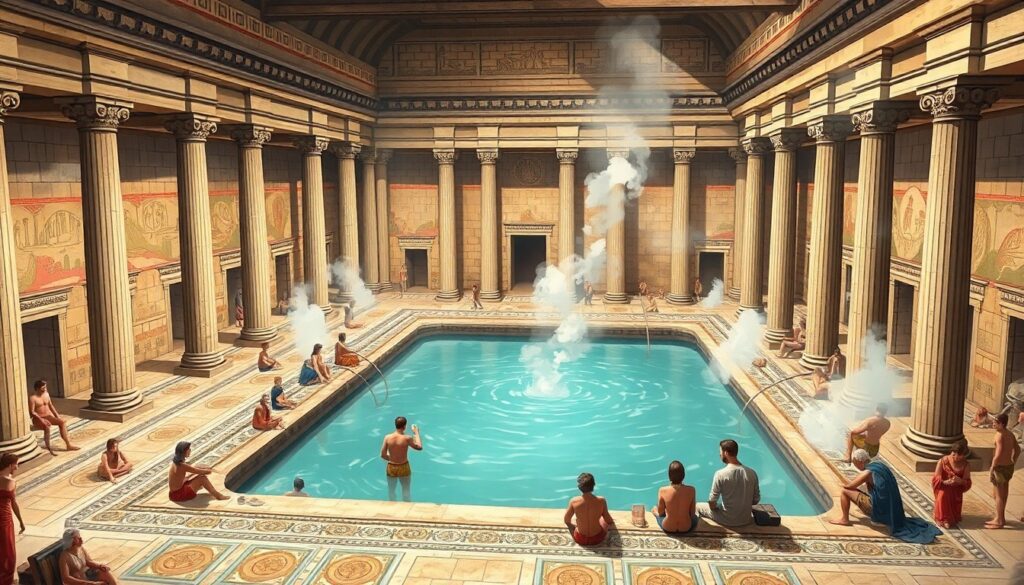
The Concept and Design of Roman Baths
Roman baths, known as thermae or balneae, were integral to ancient Roman culture, offering spaces for relaxation, socialization, and cleanliness. Here are key points about their design and concept:
1. Thermae vs. Balneae
- Thermae referred to large imperial bath complexes, showcasing grandeur and luxury often associated with the patricians, the wealthy elite of ancient Rome.
- Balneae were smaller facilities found in various settings like private villas or forts.
2. Architectural Features
- Specialized Rooms:
- Caldarium (hot room) for steam baths.
- Tepidarium (warm room) for gradual temperature change.
- Frigidarium (cold room) for cold baths.
- Sudatorium (steam room) for intense sweating.
- Laconicum (dry heat room) for relaxation.
- Supporting Facilities:
- Apodyterium served as a changing room.
- Palaestra offered an exercise area for physical activities.
The design of Roman baths catered to different bathing preferences and social interactions, reflecting the Romans’ innovative approach to public hygiene and community engagement. The strategic placement of these baths within the urban landscape was often facilitated by the extensive Roman roads, which played a crucial role in maintaining and expanding the empire.
Moreover, these baths were not just about cleanliness; they also served as a platform for social interaction among the different classes of society. This aspect of Roman life is deeply intertwined with their art and culture, which flourished during this period.
In addition to their architectural grandeur and social significance, Roman baths also reflect the influence of Roman mythology on various aspects of life including architecture and public spaces. The multifaceted nature of these baths underscores their importance in understanding the broader context of ancient Roman civilization, including its military might as exemplified by the Roman Army, which was instrumental in achieving victories across large areas.
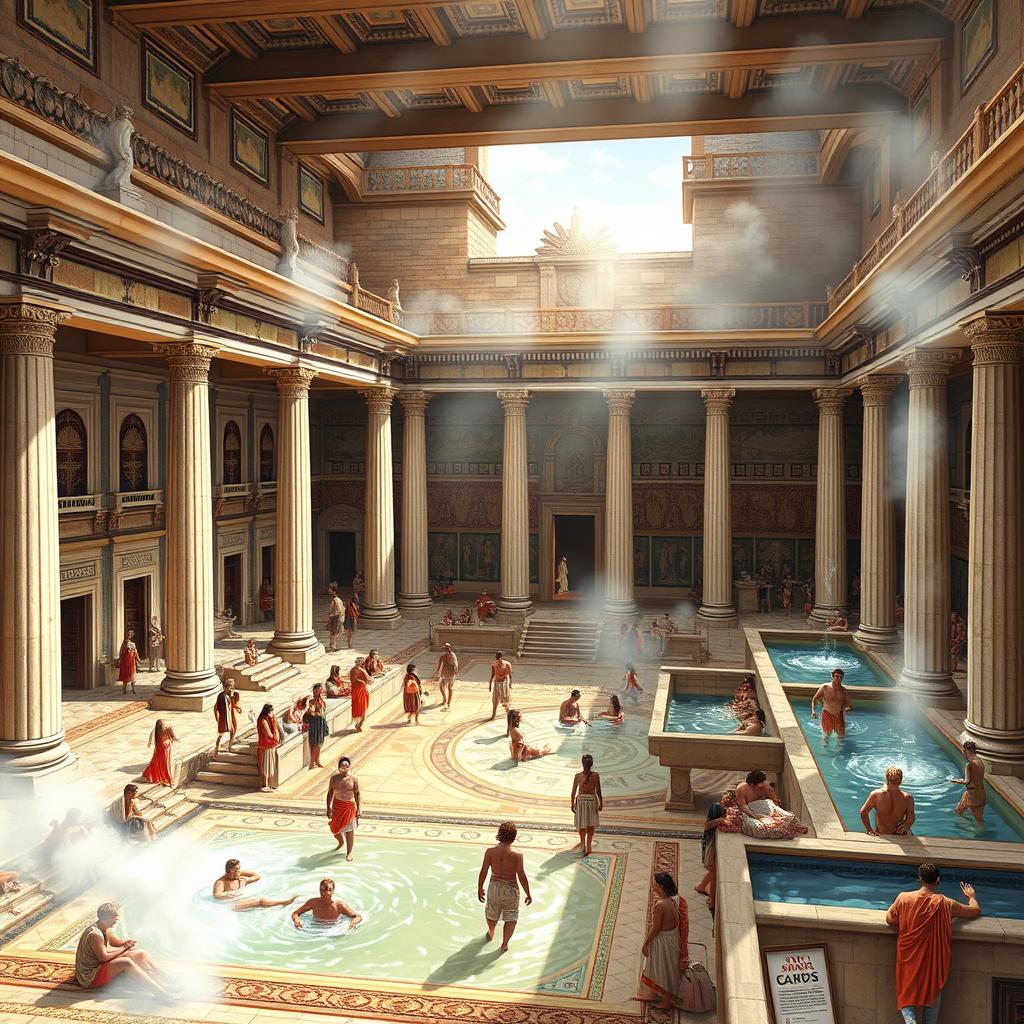
Functions Beyond Bathing: Social and Cultural Roles
The Roman baths were more than just places for personal hygiene. They served as vital social hubs, where people from various walks of life came together. With amenities like libraries and poetry reading rooms, these baths provided an environment that fostered intellectual growth and cultural appreciation. The architectural design of these baths, a testament to the Roman architecture skills, made them appealing social venues.
Beyond socializing, the baths played a significant role in promoting health. They offered facilities for exercise, massages, and dietary practices that contributed to overall wellness. This aspect of Roman hygiene practices was not just about cleanliness; it was about fostering a communal sense of well-being.
Moreover, the baths were instrumental in strengthening community bonds among the people. They provided a space for interactions that transcended social classes, thereby fostering a sense of unity among the diverse population of Rome. The significance of these communal spaces in the daily lives of Romans cannot be overstated, as they played a crucial role in shaping the social dynamics of ancient Rome.
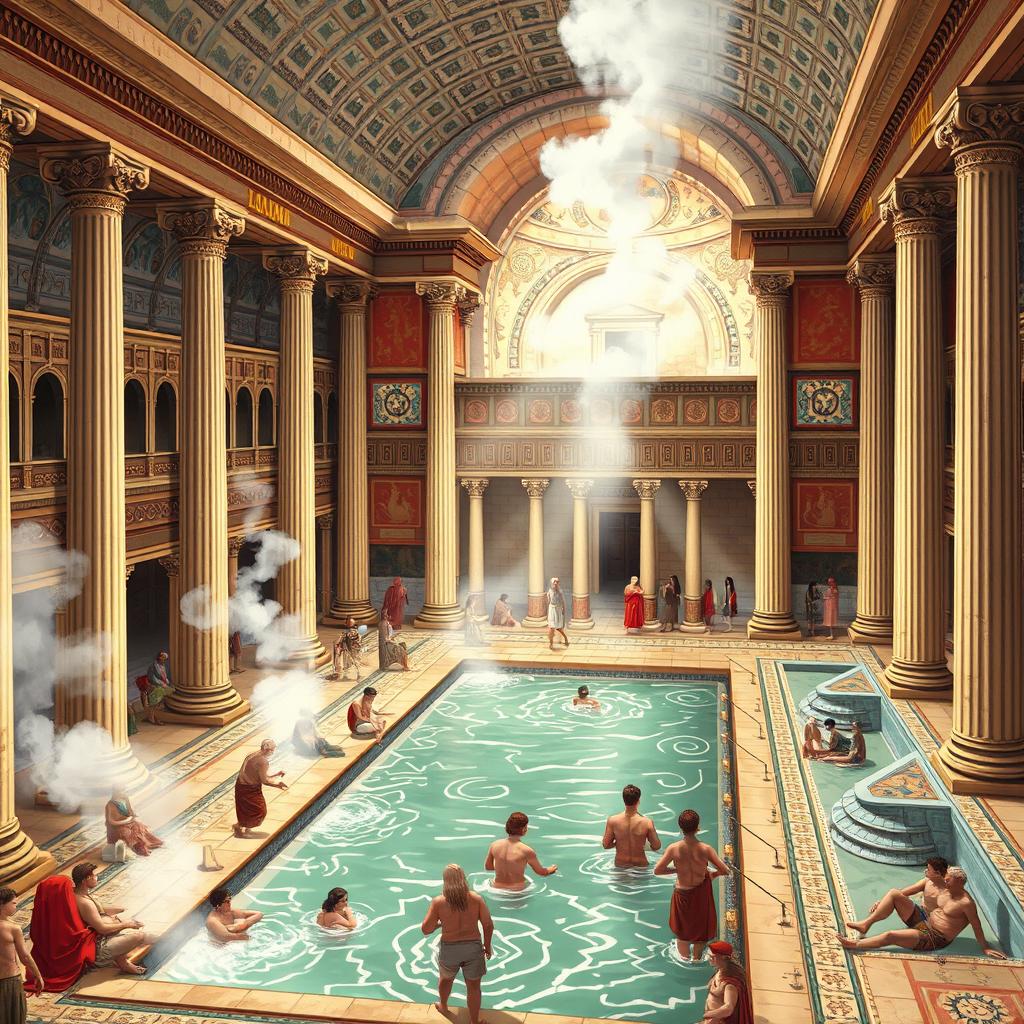
Engineering Marvels Behind Roman Baths
Roman baths demonstrate remarkable engineering, particularly in their water supply and heating systems. The success of these complexes relied heavily on aqueducts—ingenious structures designed to transport fresh water from distant sources directly into the baths. These aqueducts ensured a steady and abundant flow of water, vital for filling the various pools and maintaining hygiene standards.
The hypocaust heating system stands out as a technical innovation. This method involved raising the floors on pillars to create a hollow space through which hot air from furnaces would circulate. This warm air heated the floors and walls, creating comfortable temperatures in rooms like the caldarium (hot room) and tepidarium (warm room). This underfloor heating allowed bathers to enjoy warmth even during colder seasons, showcasing Roman mastery in climate control within architecture.
In regions blessed with natural thermal springs, such as Bath in England, these hot springs were integrated seamlessly into bath complexes. The natural heat and mineral-rich waters added therapeutic qualities to the bathing experience while reducing energy demands for heating. Combining nature’s gift with human innovation resulted in some of the most luxurious and efficient bathhouses of antiquity.
These engineering feats highlight the advanced capabilities behind Roman baths around the world—a blend of practicality, luxury, and sustainability that still impresses modern observers. Such incredible Roman engineering feats not only transformed bathing practices but also laid down foundational principles for contemporary infrastructure systems.
Moreover, these advancements occurred within the broader context of Roman law, which has played a crucial role in shaping modern legal systems since its inception around 753 BCE. Understanding this legal legacy is essential for grasping the foundations of contemporary laws.
Additionally, the transition from monarchy to a republican political system marked a significant shift in Roman governance. This transition, known as the birth of the Roman Republic, represents a pivotal moment in history that continues to influence modern political structures.
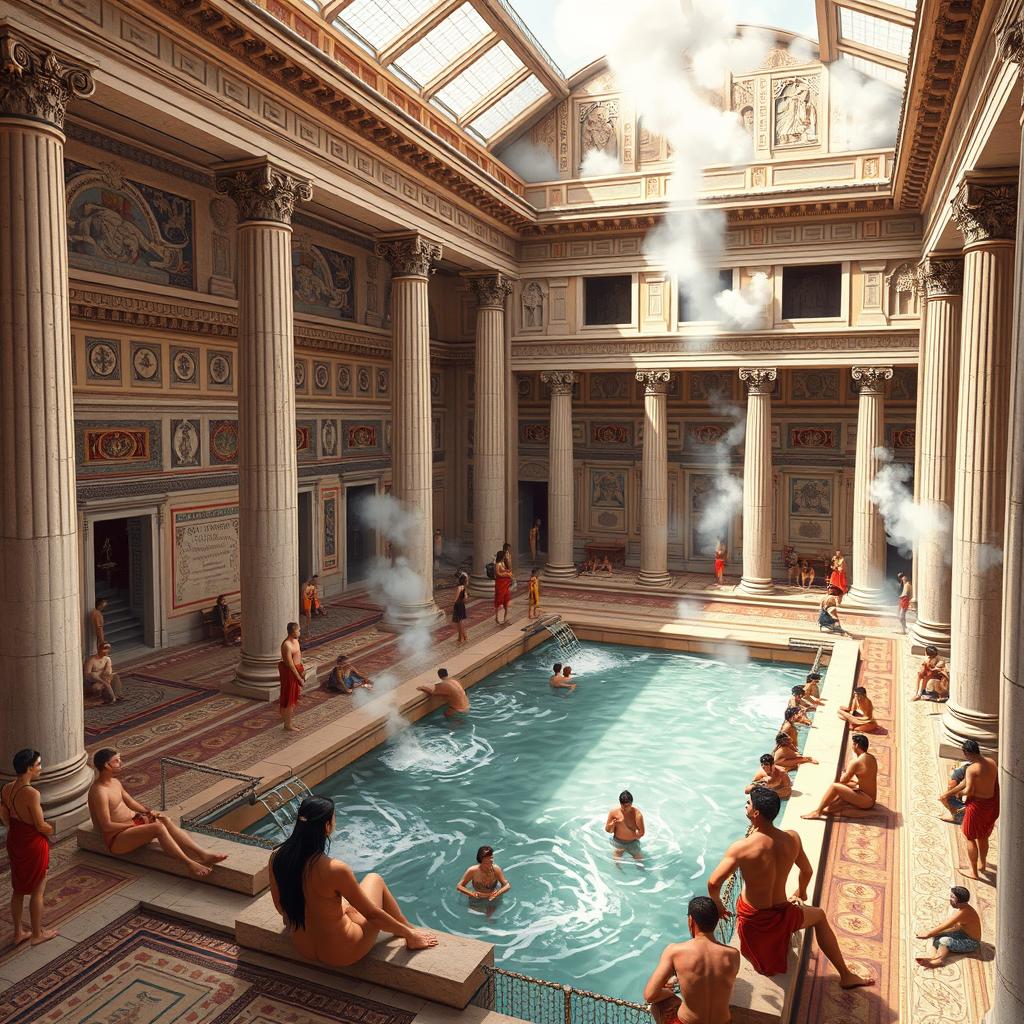
Notable Global Remains of Roman Baths
The Roman Baths in Bath, England, stand as a testament to the grandeur and innovation of Roman engineering. This site, designated as a UNESCO World Heritage Site, showcases the historical significance of Roman baths and their impact on architectural development. The Temple of Sulis Minerva, located within the complex, highlights the fusion of Roman and Celtic religious beliefs.
In Bath, England, the preservation status of the Roman Baths is exceptional, offering visitors a glimpse into the ancient world of bathing rituals and social interactions. The connection to natural hot springs adds a unique dimension to this site, where visitors can still witness steam rising from the sacred waters that have been revered for centuries.
Another notable global remain is found in Split, Croatia, where ancient fortress baths reveal insights into Roman military life and urban planning. These structures face preservation challenges due to modern development pressures and the need for ongoing conservation efforts to protect their historical value.
Exploring these global remains of Roman baths provides a window into the past, showcasing not only the architectural prowess of the Romans but also their cultural practices and societal priorities. From Bath, England, to Split, Croatia, these sites offer invaluable insights into an era where bathing was not just a daily routine but a social and communal experience intertwined with notions of luxury and well-being.
However, understanding these remnants requires a broader perspective on the rise and fall of the Roman Empire, which spanned over a millennium and shaped politics, culture, and society in ways that continue to resonate today. Furthermore, it’s essential to recognize the legal status of Roman women during this period. Their rights and restrictions significantly influenced gender dynamics in ancient Rome.
Lastly, one cannot overlook the enduring influence of the Corpus Juris Civilis on modern law, which was a significant achievement in the history of law commissioned by Emperor Justinian I in the 6th century AD.
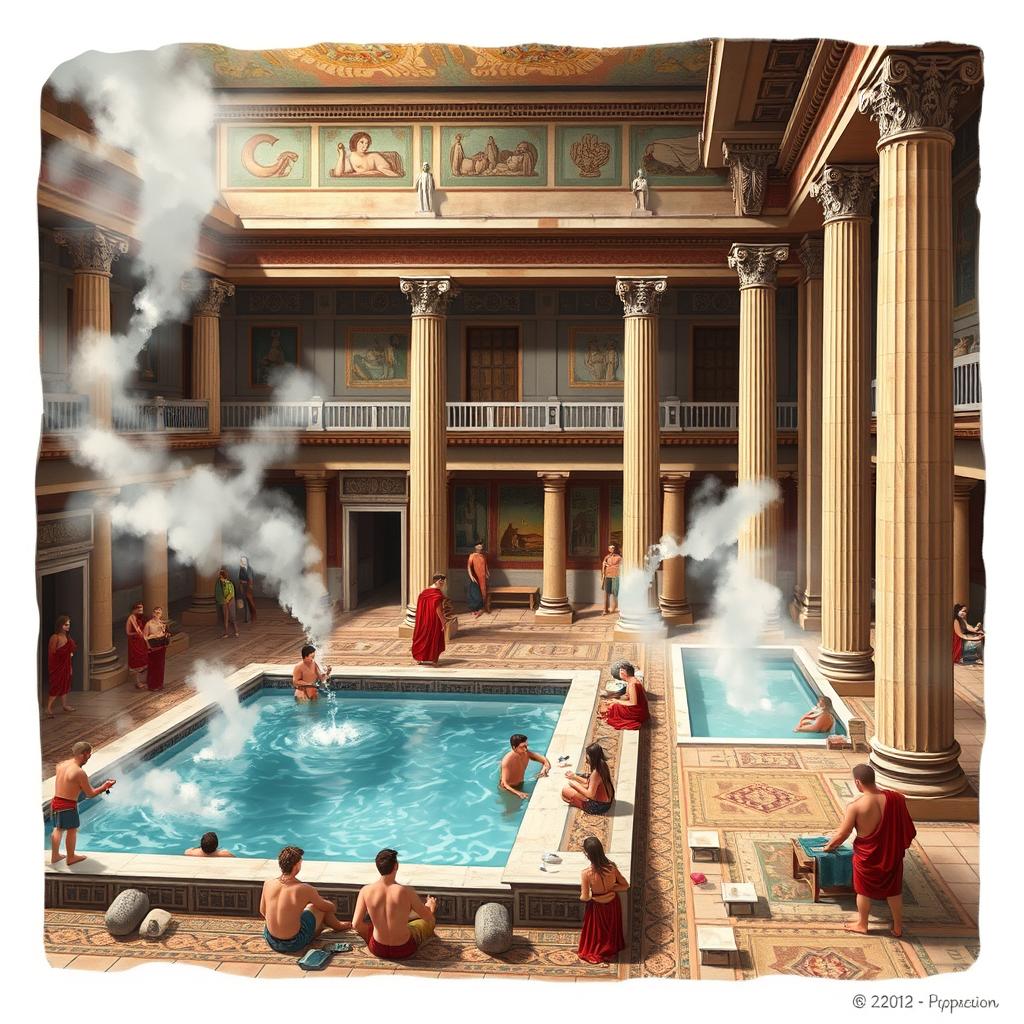
The Legacy of Roman Baths in Modern Culture
The legacy of Roman baths continues to shape luxury bathing traditions and public wellness spaces today. Public bathing evolved from simple hygiene practices into elaborate social rituals, much like in ancient Rome, where communal experiences remain central.
Architectural Influence
The architectural influence of Roman baths is visible in modern spa design:
- Use of multiple temperature-controlled rooms mimics the caldarium, tepidarium, and frigidarium layout.
- Incorporation of spacious changing areas and exercise zones reflects the apodyterium and palaestra.
- Emphasis on symmetry, grand entrances, and decorative mosaics draws from Roman aesthetics.
Contemporary Wellness Centers
Contemporary wellness centers and spas often incorporate communal pools, steam rooms, and saunas inspired by the multifunctional nature of Roman bathhouses. These features promote relaxation, social interaction, and health benefits—principles deeply rooted in Roman culture.
Examples include:
- Scandinavian sauna traditions that parallel the laconicum’s dry heat experience.
- European thermal spas utilizing natural hot springs akin to those at Bath, England.
- Urban wellness complexes blending fitness facilities with spa amenities to recreate the holistic approach Romans practiced.
Foundation for Public Wellness Spaces
Roman baths set a foundation for public wellness spaces that balance luxury with communal health benefits—a concept still thriving in today’s design and lifestyle choices. This balance mirrors the broader societal aspects of ancient Rome, where daily life encompassed not just personal care but also social interactions and communal activities. The spectacle of ancient Rome further illustrates this point, as entertainment was a crucial part of society that significantly affected social relationships and political authority.
Conclusion
Preserving these global heritage sites is crucial for safeguarding ancient hygiene practices and cultural preservation.
By conserving these Roman baths, we not only ensure historical education for future generations but also stimulate tourism in their respective regions, boosting local economies and promoting cultural exchange.

